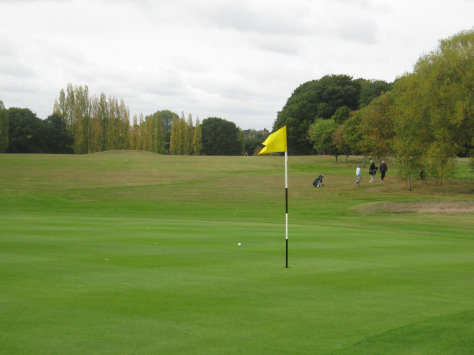 Budget cuts invariably mean pressure on local authority turf managers to make economies but, as Steve Fenn of Southend Borough Council points out, at Belfairs Golf Course, the public still expect high standards.
Budget cuts invariably mean pressure on local authority turf managers to make economies but, as Steve Fenn of Southend Borough Council points out, at Belfairs Golf Course, the public still expect high standards.
“We have not pulled back on the care of our greens – the council’s Belfairs Golf Course is renowned for the quality of its greens, so to keep golfers playing we have to keep them in good shape,” he says. “The only area where we have revised our maintenance is on the fairways.”
Nutrition programmes for the 18 hole course, plus an additional nine hole pitch and putt, are carefully worked out with the help of Headland Amenity’s Claire Kilmurray. The greens regime kicks off in March/April with the application of a mini-grade controlled release fertiliser that lasts for the whole growing season. This supplies a consistent, base feed of nutrients, ready to be supplemented by additional liquid feeds when needed.
May sees the commencement of liquid spoon-feeding using fertiliser tank-mixed with a seaweed based biostimulant such as Headland’s Seamac Ultra Plus to boost resistance to the stress which comes with dryer conditions. Wetting Agent applications are carried out from April and repeated through the season. “We did try to cut down the use of wetting agents but had problems with dry patch,” comments Steve. “In my view preventative action using a quality Wetting Agent is better than fire fighting.”
Summer liquid feeding is applied when required but Steve also uses C-Complex 7:0:7, an organic mineral fertiliser, which also adds calcium and magnesium.
“I find the C-Complex especially long lasting, which of course brings savings not just in product but in time and machinery costs too,” Steve comments.
It is important for Steve to plan to ensure that the sward in the best possible position to resist the looming threat of disease which comes with autumn.
“Half of the course is woodland, which means that many of the greens are shaded with little through draught and as they are mainly Poa annua, Fusarium is a constant threat. Once one green is affected, it can spread through the rest if not treated promptly, so disease control is a vital task in the autumn,” says Steve. Headland’s plant elicitor and plant protectant products are utilised to help the turf minimise disease, while feeding is based on a 12:0:44 Multigreen Miniprill to encourage strong, healthy growth going into winter – benefitting from a controlled release of potassium, as and when the plant requires.
If it is needed, a granular feed and mosskiller is applied which hardens off the turf and gives long lasting winter colour on theEssexcourse, which is busy all year round.
For the past five years, Steve has used a targeted fungicide regime which has shown good results.
“In the third week of September, we use a preventative product such as Throttle to hit the Fusarium and repeat it in October. To compliment this, we use a high quality dew dispersant in November and December to control dew formation, an approach which has proved very effective in cutting disease.”
The year is completed in December with an iron tonic to further boost disease resistance.
Steve has also kept up his maintenance operations.
“By keeping the turf healthy you can guard against potentially costly problems – we like to verticut weekly, use an Earthquake machine for decompaction and put vibratory rollers on the greens to keep speeds up. We’ve also invested in a new irrigation system which now covers approaches, surrounds and tees so that has made a significant contribution to quality and a better all-round golf course,” he comments.
“We have revised and economised on the products where possible we use for all turf surfaces, including bowling greens and cricket squares, but do not believe that it would be cost effective to cut corners with the golf course,” Steve adds.
It would seem that regardless of the economic environment, for Southend Borough Council the customer is still king.
Belfairs Golf Course www.belfairsgolfclub.co.uk
Headland Amenity www.headlandamenity.com

